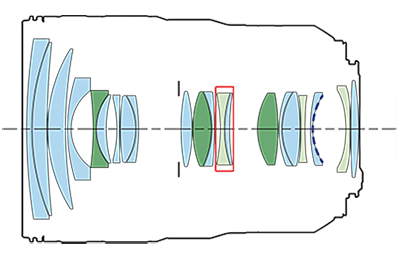- Specifications
- Block diagram
| Marketed | September 2019 |
| Original Price | Open price |
| Lens Construction (group) | 15 |
| Lens Construction (element) | 21 |
| No. of Diaphragm Blades | 9 (circular aperture) |
| Minimum Aperture | 22 |
| Closest Focusing Distance (m) | 0.21 (at 24mm) |
| Maximum Magnification (x) | 0.30 (at 32mm) |
| Filter Diameter (mm) | 82 |
| Maximum Diameter x Length (mm) | Approx. 88.5×125.7 |
| Weight (g) | Approx. 900 |
Taking advantage of the characteristics of the RF mount—a large internal mount diameter and a short back focus1—this lens achieves overwhelmingly high image quality from the center of the image field to the peripheral areas. What’s more, newly featuring image stabilization equivalent to approximately five shutter speed stops2 and Canon’s proprietary Nano Ultra-Sonic Motor (USM), the lens makes possible comfortable shooting of stills and video.
The RF24–70mm F2.8 L IS USM achieves a maximum f/2.8 aperture throughout its focal length range. Covering focal lengths from wide-angle to medium-telephoto, the standard zoom lens can be used for a wide range of scenarios, from snapshots to landscape and portrait photography as well as for video. Additionally, featuring an optical design that incorporates 21 elements in 15 groups, including three glass molded aspherical lenses and three UD lenses, the RF24–70mm F2.8 L IS USM mitigates various aberrations that result in image degradation, to achieve high image quality across the entire zoom range.
1 A short distance between the optical axis from the vertex of the rear lens element to the imaging plane when focused to infinity.
2 When used with the EOS R at a focal length of 70 mm. Based on CIPA standards.

Aspherical lens UD lenses IS unit
ASC


